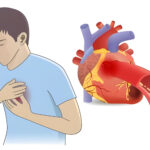Introduction to Diltiazem (Cardizem) and its types
Source: https://encrypted-tbn0.gstatic.com/images?q=tbn:ANd9GcQOnCxztm0k-sJGGjcRMaMPAKe13CMJRx2Dng&usqp=CAU
Diltiazem, marketed as Cardizem, is widely utilized for managing atrial fibrillation (AF) with rapid ventricular rate (RVR). Cardizem drug class is Class IV antiarrhythmic. Cardizem for afib is the most widely used drug.
It belongs to a class of drugs called calcium channel blockers. It works by blocking the influx of calcium into cells, helping to regulate heart rhythm and reduce heart rate in AF with RVR cases.
Calcium channel blockers (CCBs) are categorized based on their chemical structure. Let us discuss them.
Dihydropyridines (DHPs)
- Dihydropyridines (DHPs) are recognized by the “pine” suffix in their names.
- They preferentially act on the blood vessels rather than the heart, aiding in the relaxation of arterial walls and reducing overall blood pressure and heart workload.
- Primarily prescribed for managing high blood pressure and angina due to their ability to decrease vascular resistance and heart’s oxygen demand.
- Side effects may include low blood pressure and increased heart rate due to the body’s response to vasodilation.
- Common examples are Amlodipine, Nicardipine, and Nifedipine.
Non-dihydropyridines (NDHPs)
- Non-dihydropyridines (NDHPs) lack the “pine” suffix in their names.
- They are categorized into benzothiazepines and phenylalkylamines, targeting heart-specific calcium channels more than blood vessels.
- These CCBs are effective for heart rate control in conditions like atrial fibrillation, due to their precise action on the heart’s electrical nodes.
- Examples include Diltiazem for benzothiazepines and Verapamil for phenylalkylamines.
Vaughan-Williams Antiarrhythmic Classification
The Vaughan-Williams Classification categorizes cardizem as an antiarrhythmic drug into four main classes based on their action mechanisms, with a fifth class encompassing drugs with unique mechanisms.
Each class targets specific aspects of cardiac cell function, affecting different areas of the heart such as the atria, AV node, or ventricles, and are chosen based on their specific effects on arrhythmias, whether they impact atrial or ventricular cells or both.
It’s crucial to recognize that although all these drugs are used to manage arrhythmias, each class acts through a unique mechanism, leading to varied effects on the heart’s cells. Some drugs specifically target cells in the atria, the AV node, or the ventricles, while others are capable of addressing arrhythmias in both the atria and ventricles.
Here’s a table to better understand these classifications.
Understanding Diltiazem’s Role in Cardiac Care
Diltiazem plays a crucial role in cardiac care by acting as a calcium channel blocker. This means it helps relax the heart muscles and the blood vessels. By doing so, Diltiazem effectively lowers blood pressure and reduces the heart’s workload.
This mechanism of action is vital for controlling heart rate and managing conditions such as hypertension and angina. It works by limiting the amount of calcium that enters the heart’s muscle cells, which is a key factor in regulating heart function and blood pressure.
Clinical Uses of Diltiazem
Diltiazem (iv cardizem) is widely used to treat heart conditions such as atrial fibrillation and hypertension. Atrial fibrillation involves an irregular and often rapid heart rate, leading to poor blood flow, while hypertension refers to high blood pressure, a condition that can lead to serious complications if not managed.
Diltiazem’s effectiveness in these conditions is supported by clinical guidelines and evidence-based practices, highlighting its role in improving heart function and preventing complications related to these heart conditions.
Let’s understand Diltiazem (Cardizem) usage better by an example.
A 50-year-old man visited the Emergency Department due to palpitations that began while he was mowing the lawn. He also has a history of hypertension and atrial fibrillation.
He is fully conscious and shows no signs of inadequate blood flow.
However, his vital signs includes:
Heart Rate: 165/min, strong and irregular
Blood Pressure: 140/100 mmHg
Ventilatory Rate: 22/min
SpO2: 98% on room air
The patient reported taking his medications regularly and has no allergies.
An ECG was performed to assess his heart’s electrical activity. A 12 Lead ECG is recorded.
Atrial fibrillation with a rapid heart rate and signs of reduced blood flow to the heart’s inner layers.
This is where Diltiazem (Cardizem) plays a crucial role in stabilizing the patient’s condition. He received an initial treatment of 20 mg of diltiazem administered over 2 minutes. This is followed by a maintenance dose of 10 mg over an hour and a separate dose of 0.25 mg of digoxin. After this treatment, a change in heart rhythm was observed. This was ensured by the recording of another ECG for further evaluation.
The ECG showed a normal sinus rhythm, signs of left ventricular hypertrophy via limb lead voltage criteria, and left atrial enlargement. The absence of subendocardial ischemia indicates the previous ST-segment depression was likely due to the rapid heart rate.
The patient was then asymptomatic. He was admitted for observation and experienced no further complications.
Diltiazem Dosage and Administration
While dosages can differ due to doctor’s instructions, established protocols, and patient age, a typical starting dose is 0.25 mg/kg, generally 10-20 mg given over 2 minutes. This may be followed by a second dose of 0.35 mg/kg, usually 20-25 mg over another 2 minutes, and potentially a continuous infusion of 5-10 mg per hour.
Standard dosing often starts at a lower dose, which can be adjusted depending on how well the patient responds and tolerates the medication. The method of administration can vary between oral tablets and intravenous forms, depending on the clinical situation.
For patients with narrow QRS complex AF with RVR who are hemodynamically unstable, immediate synchronized cardioversion starting at 120-200 Joules is recommended, without postponing for anti-arrhythmic drug administration.
Adjustments may also be necessary for specific populations, such as those with kidney or liver issues.
Side Effects and Precautions
When taking Diltiazem, patients might experience side effects such as dizziness, headaches, and swelling of the ankles or feet. It’s important for both patients and healthcare providers to monitor for any adverse reactions, especially those that could indicate more severe issues, such as heart problems or liver dysfunction.
Contraindications include certain conditions where Diltiazem should not be used, and adjustments may be necessary for patients with specific health concerns.
Precautions
- Caution with Diltiazem: Avoid using cardizem for atrial fibrillation with rapid ventricular response when there’s an additional conduction pathway, such as in Wolff-Parkinson-White syndrome, due to the risk of dangerously fast heart rates.
- Preferred Alternatives: For stable patients with pre-excited atrial fibrillation and rapid ventricular response, Procainamide or Ibutilide are the treatments of choice.
- Diltiazem in Heart Failure: While Diltiazem can be administered to patients with atrial fibrillation who also have heart failure, careful monitoring is necessary if there is decreased heart pumping function or low blood pressure.
Comparing Diltiazem with Other Medications
Diltiazem is a calcium channel blocker that stands out for its effectiveness in managing heart rate and blood pressure. Compared to other medications in its class, Diltiazem can be particularly beneficial for patients with specific heart conditions like atrial fibrillation.
However, it may have different side effects and interactions than its counterparts. When choosing between Diltiazem and other medications, it’s important to consider individual health profiles and consult healthcare professionals for tailored advice.
Conclusion
Diltiazem is crucial for treating heart conditions like high blood pressure and atrial fibrillation. Cardizem for afib is also one of its major uses. It works by relaxing heart muscles and blood vessels, offering a unique approach to managing heart health.
Patients and healthcare providers should closely monitor for side effects and adjust dosages as needed. Use calcium channel blockers cautiously in heart failure patients with reduced ejection fraction and low blood pressure.
In cases of poor blood circulation and unstable patients, immediate electrical cardioversion should take precedence over anti-arrhythmic medication administration. Consultation with healthcare professionals is essential to ensure the safe and effective use of Diltiazem, tailored to individual health profiles.






